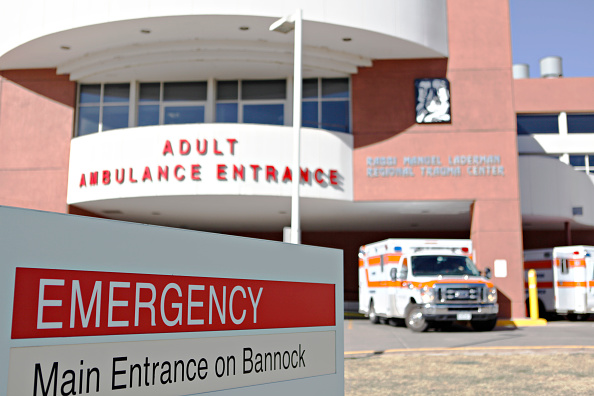Report On Business® Roundup: July Hospital PMI®

On Monday morning, Nancy LeMaster, MBA, conducted her monthly conference call to break down the Hospital ISM® Report On Business® for July from a place of robust discussion of the dynamics impacting the data — and health-care supply chains.
The Chair of the Institute for Supply Management® Hospital Business Survey Committee ducked out of a session at the Association for Health Care Resource & Materials Management (AHRMM) Conference & Exhibition in Orlando, Florida, to debrief on the report, which featured a Hospital PMI® of 53.3 percent, a 1.8-percentage point increase compared to June. (The Hospital Report On Business® is a partnership between ISM and AHRMM, the American Hospital Association’s Chicago-based affiliate group for health-care supply chain professionals.)
The composite index increased despite an 8-percentage point decrease in the Business Activity Index, which fell into contraction territory. However, LeMaster said that was likely the result of summer seasonality, and that Business Survey Committee respondents are not worried about a lengthy drop in demand.
“The health-care market has changed over the past few years,” she said. “Summer used to be a really busy time for elective procedures, and the last quarter of the year used to be slow. But that has completely reversed — a slowdown in the summer with the exception of pediatric procedures because kids are out of school. And the fourth quarter is usually now the strongest volume of the year.”
Institute for supply management hospital PMI rises to 53.3% in Jul, points to continued expansion in healthcare; "high labor and supply costs continued to erode margins" but employment still growing: pic.twitter.com/k4WcNpzzua
— EJ Antoni (@RealEJAntoni) August 7, 2023
Other demand gauges were positive: The New Orders Index was steady, dropping just 0.5 percentage point to remain above 50 percent, and the Backlog of Orders Index increased 11 percentage points to move into expansion territory. “Those indicators suggest things are going to be OK regarding volumes moving forward,” LeMaster said. “It’s not quite as good of a story on the supplier delivery side.”
The Supplier Deliveries Index increased 11 percentage points to move into strong expansion (or “slower”) territory, indicating longer lead times but helping the composite PMI®. Supplier Deliveries is the only ISM® Report On Business® index that is inversed; a reading of above 50 percent indicates slower deliveries, which is typical as the economy improves and customer demand increases.
Survey respondents commented on back orders and shortages for products, particularly resins. The Touchless Orders Index fell into contraction territory, down 4.5 percentage points to 47 percent, indicating less automation ease in replenishing stocks.
Pharmaceutical shortages have gotten increased attention from lawmakers, while further supply chain indigestion was averted by a temporary labor agreement at UPS Inc. Most direct-to-hospital shipments from manufacturers are via UPS or FedEx, LeMaster said.
“Panelists were feeling a little bit more pain in July in terms of getting the products they wanted and delivered quickly,” LeMaster said. Memories of the coronavirus pandemic likely added to the anxiety, she added: “Supply managers are still living with the aftermath of COVID-19 and the feeling of a lack of control in getting supplies they need, any (potential disruption) is making them more sensitive and more proactive to finding alternate sources.”
There were also continuing price pains. All three indexes — Prices, Prices: Supplies and Prices: Pharmaceuticals — increased in July and are above 60 percent. And with facilities having more success in hiring permanent employees instead of more-expensive traveling clinical staff, employment costs as a percentage of revenue are starting to stabilize, LeMaster said. That’s not the case for non-labor costs, including supplies.
“In (ISM’s) Manufacturing report, there are positive indicators with prices going down, but it is not translating into finished goods,” she said. “I hoped to see in July (the Prices indexes) going down or increasing at a slower rate, but that’s not happening. And that’s putting a lot of pressure on supply chain people to look at ways to reduce costs.”
Hospital #ISMPMI survey respondents: “(Patient) census has returned to pre-#COVID19 levels, and profitability is on the upswing.” Also: “Eliminating storage costs by reducing PPE inventory built up during the pandemic.” https://t.co/7UZeref1PB #economy #healthcare
— Institute for Supply Management (@ism) August 7, 2023
The situation could get worse before it gets better, based on discussion at the AHRMM Conference & Exhibition, LeMaster said. The U.S. Senate is considering a bill designed to ease pharmaceutical supply chain issues through increased domestic production, but that would likely raise costs. However, it’s medicine the health-care sector might need to take, LeMaster said.
“Coming out of COVID-19, everyone talked about fundamental changes of investing in domestic manufacturing and buying domestic products even if they’re slightly higher priced for better long-term risk management,” she said. “But we don’t seem to learn much from our emergencies — we make some corrections, then go back to our old ways of focusing on price, price, price.”
In case you missed the Report On Business® Roundup on the release of the July Manufacturing PMI®, you can read it here. The Roundup on the release of the Services PMI® can be read here. For the most up-to-date content on the three indexes in the ISM® Report On Business® family, use #ISMPMI on Twitter.


